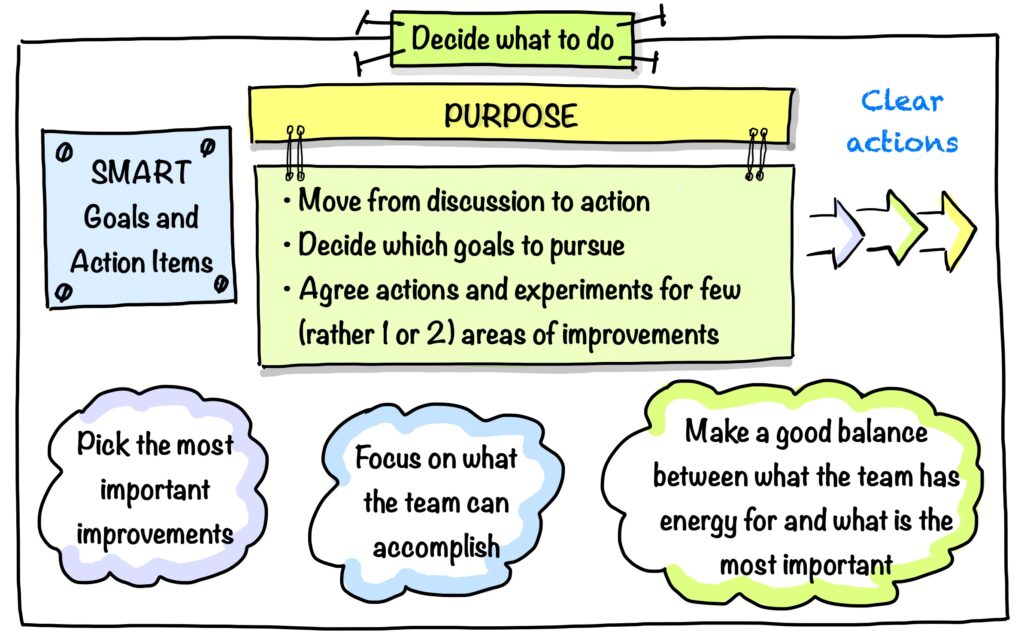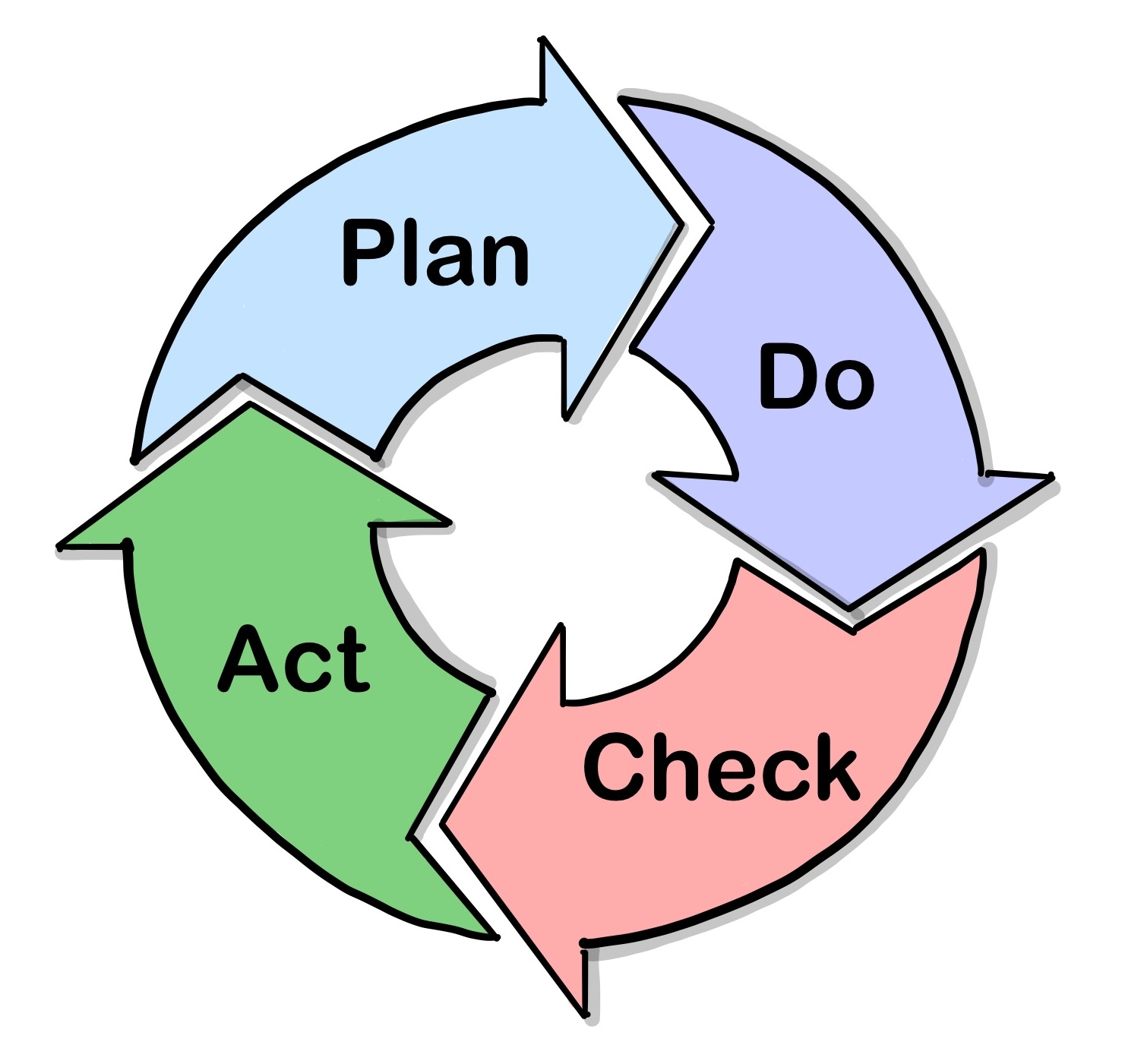Step 4 of the retrospective is Decide What To Do.

Possible problems with Decide What To Do step are:
1. Some teams rush to this step right away, skipping Generate Insights and sometime Gather Data step too, craving to jump to the generation of the solutions right away – and often to solutions of a wrong problem
2. Some teams never actually get to this step, filling up all the retrospective time space with discussions only and not deciding on any improvements (sometimes it might indeed happen that we might get stuck, but this should not become a usual pattern)
3. Many teams are trying:
– To solve too many problems at the same time
– To plan too many action items at the same time
The result of such enthusiasm usually is that all the action items get forgotten or there is no time to deal with those, and no improvements are made.
Examples of activities helping to Decide What To Do:
First, generate a number of possible Action Items using, for example:
- Open Discussions
- Brainstorming (individual, pairs, groups)
- Start, Stop, Continue and similar, like Starfish or Keep, Drop, Add – Brainstorm what to start, stop, continue, do more and less of
- Circle Of Questions – Asking and answering go around the team circle – an excellent way to reach a consensus
Then, select the top 1-3 action items that you will do, using, for example, traditional methods such as :
- Dot Voting,
- Roman Voting,
- Fist of Five
or more sophisticated ones, such as:
- Impact/Effort Matrix
- Low Hanging Fruit
- Circle of Influence – Create actions based on how much control the team has to carry them out
- Divide the Dollar – How much is an action item worth to the team?
- Action Items Cup – Action Items compete against each other in a World Cup style
